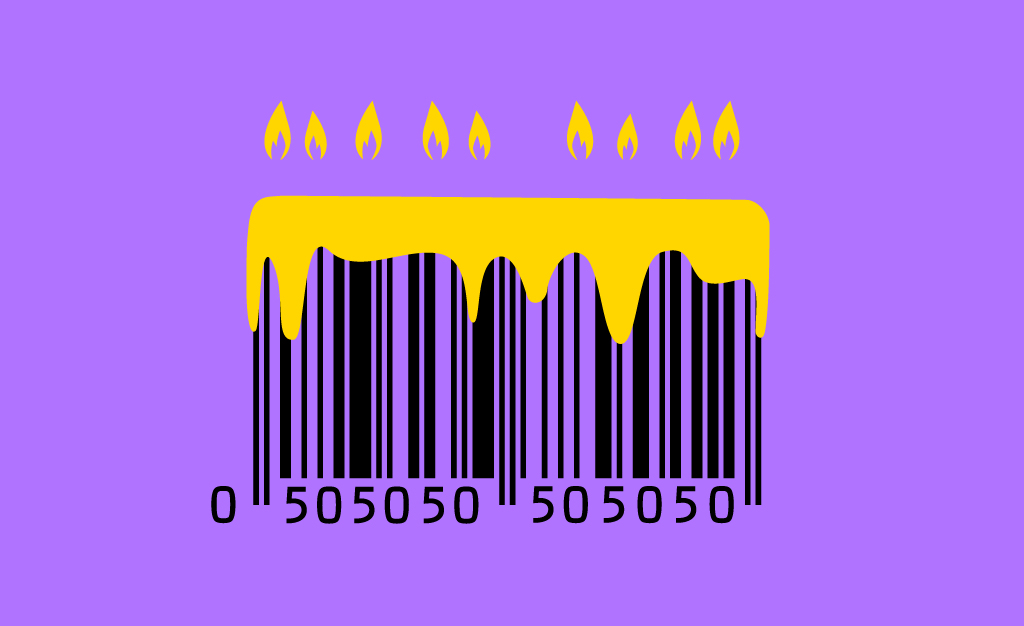This week we celebrate the 50th birthday of the barcode – an ingenious invention that is used billions of times a day around the world to scan everything from shopping items at checkouts, to shipping, warehousing systems, concert tickets, even healthcare applications.
The initial concept was invented by Bob Silver and Norman Woodland in the late 1940’s. Woodland took the concept further and drew a series of lines in the sand on Miami Beach. He took dots and dashes from Morse Code and dragged down thin lines from the dots, and thicker lines from the dashes, and created a 12 number system.
On April 3, 1973, a variation of Woodland’s original design was agreed upon by industry leaders. A year later, in Ohio, a pack of Wrigley’s chewing gum became the first product in the world to be scanned at the till.1
A barcode is a way to represent data in a machine-readable form. It is a binary code – think of the black and white as 0’ s and 1’s, or on and off. When scanned by a laser, the black parts don’t reflect well and are recorded as a 1, while the white sections are recorded as a 0. It is a universal language that bridges countries and helps make the complexity of the modern world easier to manage.
The standard 12-number system can create a thousand billion variations. Each barcode is constructed as follows:
- The first number – product type
- Next 5 numbers – manufacturer code
- Following 5 numbers – product code
- Final number – a check digit to see the number is correctly composed
QR codes are a more recent phenomenon. Where a barcode uses a one-dimensional scanner, a QR code can be accessed via a smartphone and take a user to a web page or app to access further information. Trials are underway to merge the two to see if a barcode’s lines can be incorporated into a QR‘s square design.
As designers, barcodes have to be considered in product and packaging design. They have specific requirements that need to be catered for to ensure they are instantly legible and scannable at point of use. We also have to generate barcodes for each product and test them. Control and accuracy at every step is vital.
The applications and benefits that can be attributed to barcodes are enormous. From data accuracy to product differentiation, time savings and security, the barcode is an incredible invention. It has changed the way the world works, through its thin and thick lines, in a mixture of black and white, that is an art form in its own right.
- Reference: “Beans to Bansky: 50 years of the barcode.” The Australian, Louise Eccles, April 2, 2023.

